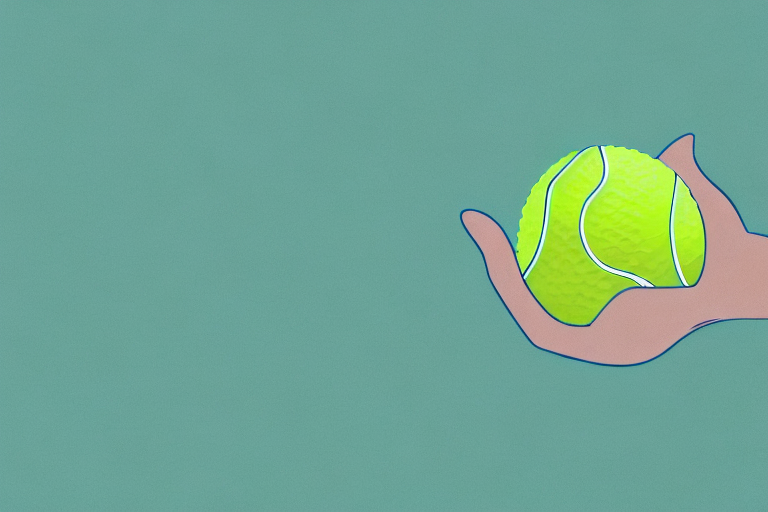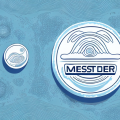If you experience pain in your upper back or shoulder blades, it could be caused by rhomboid trigger points. These knots in the muscle tissue can be both uncomfortable and inconvenient, often requiring professional therapeutic assistance to manage. However, there is a simple and cost-effective solution that can provide relief in the comfort of your own home – tennis ball therapy.
Understanding Rhomboid Trigger Points and their Causes
Before diving into the benefits of tennis ball therapy, it’s important to understand what rhomboid trigger points are and what causes them. These trigger points are areas of knotted muscle in the rhomboid muscles, located between the shoulder blades. They can be caused by injury, poor posture, or overuse of the muscle, such as sitting at a desk for extended periods of time.
When left untreated, rhomboid trigger points can cause a range of symptoms, including pain, stiffness, and limited range of motion in the shoulders and neck. In some cases, trigger points can even cause referred pain, meaning the pain is felt in a different part of the body than where the trigger point is located. It’s important to address trigger points as soon as possible to prevent them from worsening and causing more discomfort.
How Rhomboid Trigger Points Affect Your Daily Life
The pain caused by rhomboid trigger points can be debilitating, affecting your daily life both physically and mentally. They can make it difficult to perform tasks that involve the use of your arms and can even cause headaches. Living with this pain can also lead to a decrease in quality of life and overall happiness.
In addition to the physical and mental effects, rhomboid trigger points can also impact your social life. The pain and discomfort can make it difficult to participate in social activities, such as sports or even simple gatherings with friends and family. This can lead to feelings of isolation and loneliness, further exacerbating the negative impact on your overall well-being.
Tennis Ball Therapy: A Non-Invasive Method of Pain Relief
Fortunately, there is a non-invasive method of pain relief that can be done from the comfort of your own home – tennis ball therapy. By using a tennis ball to apply pressure to the affected area, you can help release the knots and alleviate the pain of rhomboid trigger points. This method is both simple and cost-effective, making it a popular choice for many people who suffer from this type of pain.
In addition to its effectiveness in relieving rhomboid trigger point pain, tennis ball therapy can also be used to alleviate pain in other areas of the body. For example, by placing a tennis ball under the arch of your foot and rolling it back and forth, you can help relieve the pain of plantar fasciitis. Similarly, by using a tennis ball to massage your neck and shoulders, you can help alleviate tension headaches and neck pain. With its versatility and ease of use, tennis ball therapy is a valuable tool for anyone looking for non-invasive pain relief.
The Science Behind Tennis Ball Therapy for Trigger Points
But how exactly does tennis ball therapy work to relieve pain caused by trigger points? It’s all about pressure. When pressure is applied to the affected area, it causes the muscle fibers to stretch and release. As a result, blood flow is increased to the area, which helps to further alleviate the pain and discomfort.
Additionally, tennis ball therapy can also help to break up adhesions or knots in the muscle tissue. These adhesions can cause restricted movement and contribute to chronic pain. By using a tennis ball to apply pressure to these areas, the adhesions can be broken up, allowing for improved range of motion and reduced pain.
How to Choose the Right Tennis Ball for Trigger Point Relief
When it comes to tennis ball therapy, not all tennis balls are created equal. It’s important to choose a ball that is the right size and firmness for your needs. A softer ball may be more comfortable, but won’t be as effective at applying pressure to the trigger points. On the other hand, a firmer ball may be too uncomfortable for some, so it’s important to choose a ball that strikes a balance between comfort and effectiveness.
Another factor to consider when choosing a tennis ball for trigger point relief is the material it’s made of. Some tennis balls are made of rubber, while others are made of foam. Rubber balls are more durable and can withstand more pressure, but foam balls are softer and gentler on the body. If you have sensitive areas or are new to tennis ball therapy, a foam ball may be a better option. However, if you’re experienced with trigger point therapy and need a ball that can withstand more pressure, a rubber ball may be the way to go.
The Best Techniques for Using a Tennis Ball to Relieve Rhomboid Pain
To use tennis ball therapy for trigger point relief, you’ll need to know the right techniques. There are a variety of ways to use a tennis ball, including rolling it over the affected area, applying targeted pressure, or using it in conjunction with other exercises. Experimentation is key to finding the method that works best for you.
It’s important to note that while tennis ball therapy can be effective for relieving rhomboid pain, it should not be used as a substitute for medical treatment. If you are experiencing chronic or severe pain, it’s important to consult with a healthcare professional to determine the underlying cause and develop an appropriate treatment plan. Additionally, if you experience any discomfort or worsening of symptoms during tennis ball therapy, stop immediately and seek medical attention.
Tips for Getting the Most Out of Your Tennis Ball Therapy Sessions
To get the most out of your tennis ball therapy sessions, it’s important to stay consistent and committed. This means regularly setting aside time to perform the exercises and using the right techniques. Additionally, it’s important to listen to your body and adjust the pressure and intensity as needed.
Another important tip for maximizing the benefits of tennis ball therapy is to incorporate stretching before and after your sessions. This can help to warm up your muscles and prevent injury. It’s also important to hydrate properly before and after your therapy sessions to help flush out toxins and reduce muscle soreness.
Other Exercises and Strategies for Preventing Rhomboid Trigger Point Pain
While tennis ball therapy can provide relief from rhomboid trigger point pain, it’s important to take steps to prevent it from happening in the first place. This can include exercises to strengthen the rhomboid muscles and improve posture, as well as taking frequent breaks during extended periods of sitting or desk work.
Some exercises that can help strengthen the rhomboid muscles include rows, pull-ups, and shoulder blade squeezes. It’s also important to stretch regularly, especially if you have a job that requires a lot of sitting or hunching over a computer. Yoga and Pilates can be great options for improving posture and flexibility.
Combining Tennis Ball Therapy with Other Pain Management Techniques
Ultimately, tennis ball therapy is just one tool in the toolbox of pain management techniques. It can be used in conjunction with other techniques, such as heat therapy, massage, or acupuncture, to provide comprehensive relief from rhomboid trigger point pain. Consulting with a healthcare professional can help you determine the best course of action for your individual needs.
By understanding rhomboid trigger points and using tennis ball therapy, you can take control of your pain management and improve your overall well-being.





